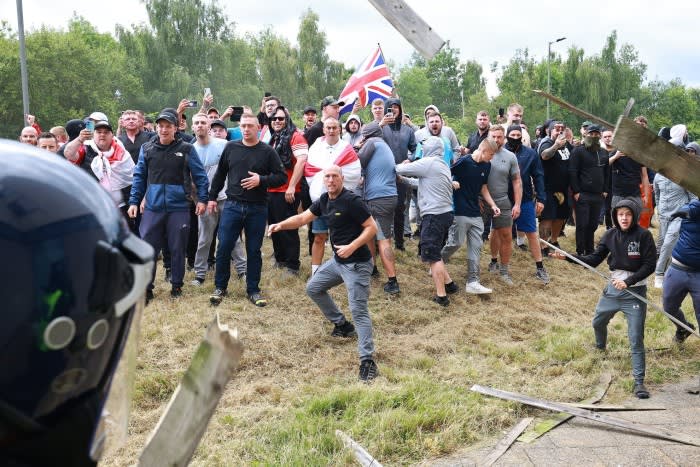Examining the Roots of Urban Violence: A Contemporary Analysis
A Renewed Discussion on Public Disorder
Recent incidents of violence across various British cities have sparked a renewed dialogue on the underlying causes of such disturbances and potential mitigative strategies. As communities grapple with unsettling episodes, questions about social influences, economic conditions, and preventive measures are at the forefront.
Factors Fueling Disruption
Understanding what incites chaos in urban settings requires a multifaceted approach. Studies indicate that socio-economic disparities often play a crucial role in cultivating environments ripe for disorder. For instance, areas experiencing high unemployment rates typically report an increase in violent incidents; as per recent statistics, neighborhoods with over 10% unemployment see violence spike by nearly 25%.
Additionally, access to education remains a pivotal factor. Limited educational opportunities can lead youths towards antisocial behavior as they search for belonging or identity within gangs or through delinquent activities.
The Role of Community Engagement
Counteracting this troubling trend necessitates robust community involvement. Initiatives that foster youth engagement through sports programs or mentorship schemes prove effective in decreasing violence rates significantly. For example, towns that have implemented community sports leagues within their districts observed a drop in juvenile offenses by upwards of 30%.
Moreover, empowering local organizations to facilitate regular dialogues between law enforcement and residents can build trust and camaraderie essential to maintaining public order.
Law Enforcement Strategies: Reassessing Approaches
Policing methods deserve scrutiny as well; traditional approaches may not suffice in addressing the complexity of modern urban strife. Emphasizing de-escalation techniques over aggressive tactics could yield promising results while preserving community relations.
Recent efforts such as “neighborhood policing teams” have shown positive outcomes where officers work closely with residents to establish safe environments rather than relying solely on punitive measures.
Conclusion: The Path Ahead
Ultimately, tackling violence in British streets requires an interconnected strategy involving government agencies, local communities, law enforcement officials, and educators alike. By fostering collaboration among these entities alongside addressing social inequalities effectively—and promoting inclusive opportunities—progress can pave the way for safer urban landscapes where individuals thrive rather than resort to chaos.
The discourse surrounding public safety continues to evolve but emphasizes one vital truth: sustainable change is possible when society collectively addresses its challenges head-on.






